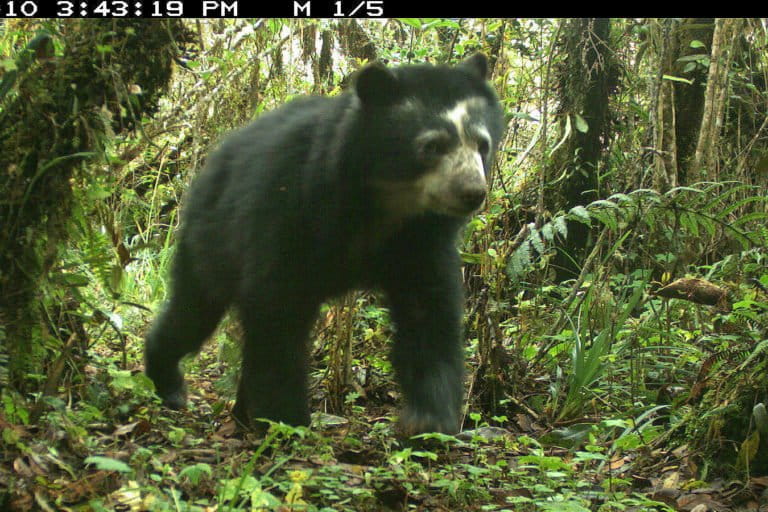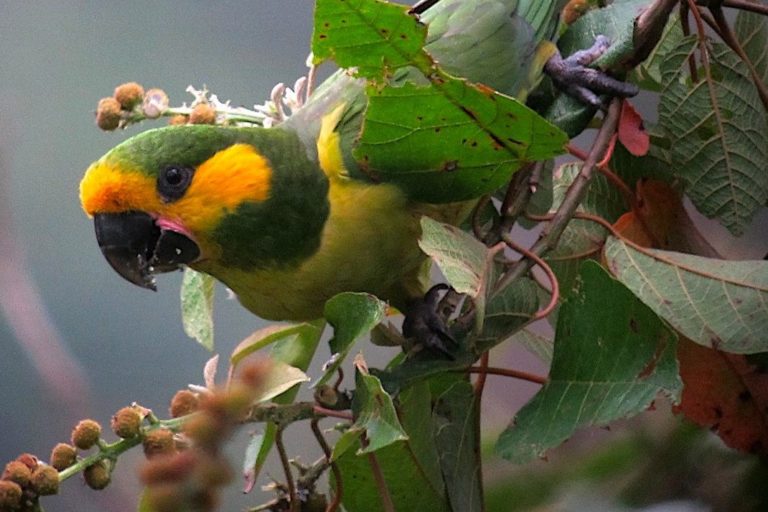- The nascent biodiversity credit market is beginning to be used to finance measurable and positive outcomes for biodiversity.
- Not to be confused with biodiversity offsets, which compensate for the residual biodiversity impacts of development, credits have been used to conserve habitat for species such as spectacled bears and yellow-eared parrots.
- As the world looks forward to the upcoming biodiversity treaty meeting (COP15) in Montreal, “credits have a chance to learn from the mistakes of their carbon counterparts. It is critical that we get this right from the start,” two credit market CEOs argue in a new op-ed.
- This post is a commentary. The views expressed are those of the authors, not necessarily Mongabay.
Biodiversity protection and restoration were key topics at COP27 in Sharm el-Sheikh, and for good reason. Ahead of the UN Climate Change Conference, which included a full Biodiversity Day this year, the World Wildlife Fund released an assessment that revealed the catastrophic effect of human activity on wildlife: according to the Living Planet Report 2022, wildlife populations shrank by an average of 69% between 1970 and 2018.
This level of biodiversity loss is both tragic and dangerous for the future of our planet, since biodiverse ecosystems, such as forests, peatlands and oceans, are natural carbon sinks that lose their efficiency when they become threatened.
We must act quickly to reverse this damaging trend and protect our planet. Voluntary biodiversity credits – proactive investments from companies, nations and even individuals to protect wildlife – could be a powerful tool, but only if used correctly. The biodiversity credit market must learn the lessons from the carbon credit market and build a transparent, accountable and inclusive system from the beginning.
Despite the promise they hold in fighting climate change, carbon offsets are yet to reach their full potential. There remains a lack of trust as there are many intermediaries, a level of uncertainty as to where the money is going, and a certain lack of standardization in the generation of carbon credits. If we make the same mistakes twice, we’ll condemn the biodiversity market to a flailing future.

Voluntary biodiversity credits that represent permanent biodiversity contributions have been one of the tools used to incentivize impactful nature conservation efforts. They are not to be confused with biodiversity offsets, which are specifically designed to compensate for the residual biodiversity impacts of a project, after a mitigation hierarchy has been applied. Instead, biodiversity credits are used to finance actions that result in measurable positive outcomes for biodiversity, through the creation and sale of biodiversity units.
Among recent examples of biodiversity credit generation, the World Economic Forum has recognized the work of several organizations, including Ekos in New Zealand for facilitating the sale of such credits from Sanctuary Mountain Maungatautari to Profile Group Limited in July 2022 and South Pole for launching the EcoAustralia credit combining carbon and biodiversity units. Our own companies, Terrasos and ClimateTrade, alongside XM, IDB Lab and Partnership for Forest, were also recognized for issuing and commercializing voluntary biodiversity credits generated from the Bosque de Niebla-El Globo Habitat Bank in Colombia.
While each of these organizations’ units represents different metrics – short-term outcomes such as pest reduction for Ekos, 30 years of conservation in a 10m2 area per credit for Terrasos and 1.5m2 of habitat protection per credit for EcoAustralia – they have all been developed in an effort to have the highest transparency and accountability standards. Their developers worked with all the relevant players in the ecosystem, including local communities, NGOs, governments and auditors, to ensure the positive impact of these units for biodiversity protection and restoration.
Our organizations also maintained transparency around costs. Their price – €30 for the Terrasos voluntary biodiversity credit, for instance – is calculated by adding up the costs of implementing and monitoring conservation measures, including technical, financial and legal management, as well as landowner incentives and compensation for the credit’s lifespan. Each credit is only sold once, and prices will necessarily vary depending on the specifications of each project issuing biodiversity credits. Credits are performance-based, and are only put on the market when they have achieved verifiable performance and management milestones.
See related: Look beyond carbon credits to put a price on nature’s services, experts say

This is perhaps where they differ the most from carbon credits, which don’t always communicate clearly about their pricing structure. Of course, the voluntary carbon market is extremely complex and diverse, with an estimated 170 different types of eligible projects, whereas the biodiversity credit market is only nascent. Additionally, carbon is an intangible asset, and the positive impact of credits can be difficult to measure and communicate properly, as opposed to nature protection and biodiversity, which is much more palpable since it can be tied to specific species. For instance, the Bosque de Niebla-El Globo Habitat Bank is home to the yellow-eared parrot and the spectacled bear, two endemic and endangered species of the Andes, and Terrasos’ biodiversity credits cover 345 hectares of a vulnerable ecosystem, the conservation of 154 plant species, 21 mammals, 154 birds and 16 water springs.
But current efforts to improve integrity through initiatives like the Integrity Council for the Voluntary Carbon Market and its Core Carbon Principles, as well as requests to increase regulatory scrutiny, are proof that the carbon market has lacked transparency since its inception. This is the biggest mistake biodiversity credit developers must avoid to ensure market adoption and generate positive impact in the fight against climate change.
As a mechanism for nature restoration and preservation, biodiversity credits must be transparently generated and priced. Their developers should also involve local communities, including Indigenous peoples, at the beginning of projects, and pay landowners and workers a fair price, ensuring that it is an inclusive, results-driven market.
Biodiversity credits are not competitors to carbon offsets: they are designed to work alongside the carbon market, allowing funding to reach even the smallest climate change mitigation projects to protect threatened ecosystems. But as the newest sibling in the nature asset family, biodiversity credits have a chance to learn from the mistakes of their carbon counterparts. It is critical that we get this right from the start, because biodiversity is crucial to climate action – and there is no time to waste. Francisco Benedito is CEO of ClimateTrade and Mariana Sarmiento is CEO of Terrasos.




